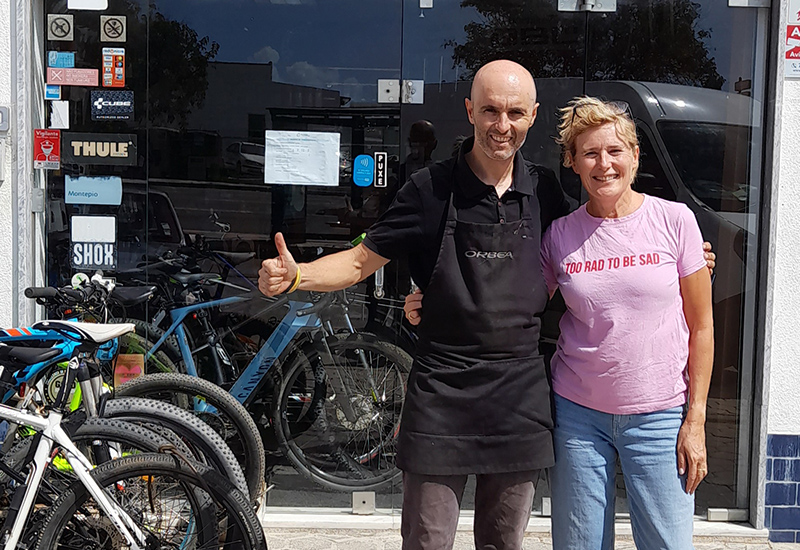Hi, Gilly here, delighted to be back out biking. Last month I started looking at injury prevention strategies and mentioned that I was going to take a closer look at ‘bike fitting.’ I read that a poor fit could be a potential reason for overuse injuries. Well, I hooked up with Rui from One Bike in Portimão to check over my bike fit and find out just how important it is. As it turns out, it is something we should all think about.
I need to start by saying that bike sizing and bike fitting are two different things.
Bike sizing is done prior to bike fitting and should be one of your top decisions when buying a bike (new or second-hand). It refers mainly to the size of the frame. There are two key measurements used to help with this, your height and inseam (inside leg length from groin to ground), which are then applied to bike manufacturer formulas (which you can find online). We all have different upper and lower body proportions, so two riders with the same height may suit different frame sizes. There are also different calculations depending on your weight and size for good weight distribution, balance and comfort – so the message here is to do your homework or get some help before you buy to make sure you get the right frame size for you.
Bike fitting is the process of adjusting the moveable parts and checking the points of contact (saddle, pedals and bars) to optimise comfort, performance and efficiency.


The three main checks are:
Saddle height is really important for comfort, power and knee health. It is easy to set (with help), sitting on your bike with both feet off the floor, you are looking for the sweet spot between your heel touching the pedal at the bottom of the rotation without being higher than your toes. If you then measure the distance from the top of the saddle to the centre of the pedal axle you can use this for regular checks as the post can slip from time to time. If you don’t have someone to help, an industry-standard measurement is to multiply your inseam measurement by .88 and use this.
Saddle setback ensures that your forward knee is directly over your pedal when your pedals are horizontal in rotation. Moving your saddle backwards or forwards to the correct position can alleviate pressure on your undercarriage and help to increase your power. You may find you have a ruler marked on your saddle rails so you can take a note and again check the position regularly.
Reach to handlebars is the distance you reach from your saddle to your handlebars. If you are overstretching, you can alter your weight distribution, which can be uncomfortable and reduce your control. If the distance is too short and you are sitting upright you will have less power when riding. Ideally, you should reach your handlebars with a slight bend in your elbows and a straight back. If you need to change your reach, you can buy stems in different lengths to move your bars forwards or backwards.
If after these have been fitted, you feel you are struggling with pain or niggles, it is also worth checking your cleats are straight (if you wear them), your saddle is straight (horizontally), your crank is the right size for your bike frame and your saddle is the right shape for you and your type of bike.
If you ride a lot and have problems or want to seriously improve your efficiency then Rui recommends a professional bike fitting. There are a few companies in Portugal that use laser systems to get a custom fit. They tend to set up for a couple of days at a time in a bike shop and operate on an appointment-only basis. For more information about frames, fitting, or this type of technical bike fitting and assessment, Rui can be contacted at info@onebike.pt
I hope this helps you to get the most out of your riding. As always, stay safe and if you have stories, tips or advice to share with the local MBT community then I would be delighted to hear from you at bikinginthealgarve@gmail.com













